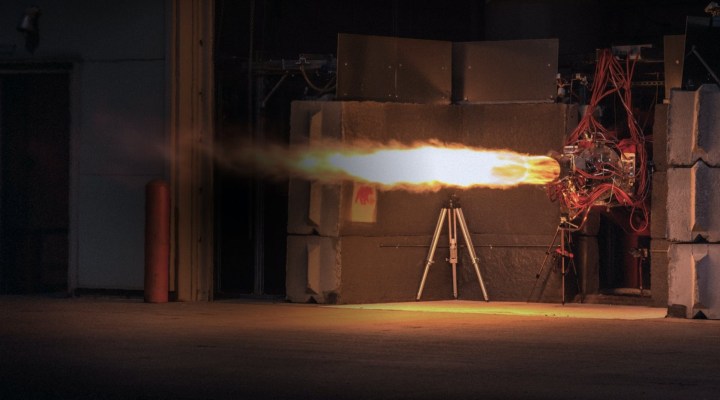The launch sector is getting crowded. Many of the biggest players are building their own rocket engines, but space startup Ursa Major is betting that many new launch providers would rather outsource the engine than build it in-house.
Six years after being founded by former SpaceX and Blue Origin propulsion engineer Joe Laurienti, the company is ready to scale up its ambitions, and it just closed its largest funding round to date to do so: an $85 million Series C led by funds and accounts managed by BlackRock, as well as participation from XN, Alsop Louie, Alpha Edison, Dolby Family Ventures, KCK, Space Capital, Explorer 1, Harpoon Ventures and others.
“A lot of what we’re trying to bring to market is that next step,” Laurienti explained. “We want to evolve this industry into much faster life cycles.”
To get there, Ursa Major wants to rapidly manufacture engines — as many as one per week in 2022, with two per week to follow. (Currently, it takes a single employee around five days to assemble an engine and up to a few weeks to get it ready to ship to customers.) The company has scored a handful of commercial customers, including Phantom Space and Stratolaunch, and R&D contracts with the government, though its engines have yet to see space.
“It made sense even six years ago that there was going to be a pretty complex ecosystem to launch because space was going to need so much accessibility,” Laurienti said. While the cost to launch has declined, the demand for space launch services is only expected to increase through the rest of the decade. Fortune Business Insights estimates that the global market size for launch will grow from $12.67 billion in 2019 to up to $26.16 billion by 2027.
But rocket engines are one of the most challenging pieces of equipment to develop; one only has to look to Blue Origin’s bumpy efforts to develop BE-4 engines for United Launch Alliance — or Elon Musk’s letter to employees about a “Raptor production crisis” — to see that engine development is no easy task.
The company has two products: the Hadley, a 5,000-pound thrust liquid oxygen and kerosene engine which is entering production now; and the Ripley, the next-gen engine that’s 10 times more powerful than Hadley with a 50,000-pound thrust. The company is booked to deliver more than 50 Hadley engines next year, with the Ripley coming into production in the next couple of years, Laurienti said.
He likened Ursa Major to a company like Intel, which is constantly innovating more powerful processors and outsourcing that expertise to brands like Dell and Lenovo. “We really like the notion that we are a technology development company, and the companies that are flying rockets today should not be flying the same engine that they architected for their rocket 10 years ago. That’s the paradigm we see in vertical integration.”
The company has a facility in Colorado where it makes the engines, which are largely 3D-printed, and that’s collocated with the company’s three test stands where each engine is tested before it sees a customer. Ursa Major is planning on using the new capital to scale up its manufacturing operations and to begin development on additional engines.
